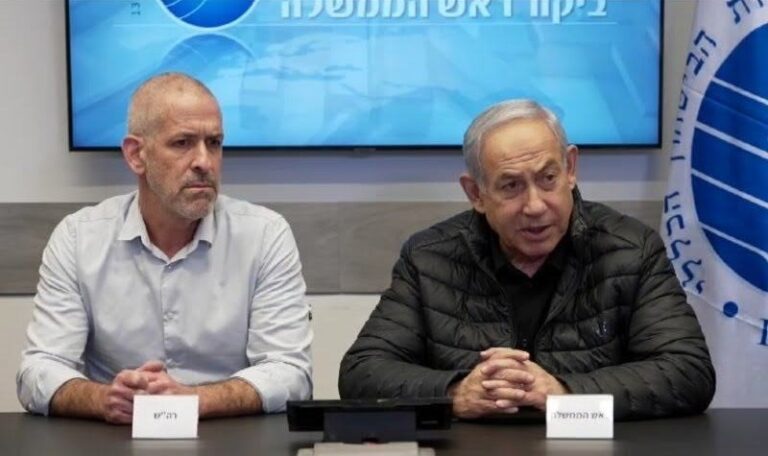by Rabbi Yair Hoffman for the Five Towns Jewish Times
The origin of the word “nightmare” is rather interesting. According to Anatoly Lieberman, the “mare” has nothing to do with a female horse. Rather, according to the Oxford English Dictionary, it comes from Old English maere. In 1300, the word night-mare referred to an evil spirit or goblin that would rest on the sleeper’s chest and cause a feeling of suffocation. By the 19th century, “nightmare” was used to describe a bad dream in general.
Nightmares, experts say, are a common response to a traumatic event, whether we are aware of them or not. Nightmares are also one symptom of post-traumatic stress disorder. Nightmares can be intense, and they can become frequent and repetitive.
Is this something that one should just accept and live with – or is there something that can be done? What is the view of all this in the eyes of halacha? There is a fascinating passage in the Talmud (Berachos 55b) where Rabbi Pedas cites a ruling in the name of Rav Yochanan: If one has had a bad dream, he should rectify it in front of three people.
It seems from the commentaries to the Shulchan Aruch (See Drisha to Orach Chayim 220, the P’ri Megadim in his Eishel Avraham commentary No. 1, and the Mishnah Berurah) that one only performs this “hatavas chalom” ceremony when one has a disturbing dream and is anxious about it. In other words, if the dream does not bother, upset, or disturb the person, there is no need or mitzvah to perform the ceremony. Parenthetically, studies have showns that if one does not eat before going to sleep, the incidence of nightmares is greatly reduced.
MAY BE MANDATORY
However, if one is indeed anxious about it, it seems that performing a hatavas chalom is in fact mandatory. It is described as having a pikuach nefesh aspect to it by the poskim (see Knesses HaGedolah on Orach Chayim ch. 288; see also the Eliyahu Rabba, Orach Chayim, ch. 220, para. 1). The idea of rectifying a bad dream is so important that it is even permitted to perform the ceremony on Shabbos, according to most poskim. (There is an opinion that it is forbidden on Shabbos—see Tzitz Eliezer Vol. XIII No. 36.)
The Rosh and the Shulchan Aruch both codify hatavas chalom as normative halachah. It is interesting to note, however, that both the Rif and the Rambam leave out this halachah entirely. If rectifying a dream is pikuach nefesh, then why would the Rif and Rambam leave out this important halachah?
The fact is that Chazal tell us that most dreams are nonsense and of no consequence. Indeed, King Solomon writes in Koheles (5:2), “For a dream comes from too much concern, and foolish talk from many words.” The Aruch HaShulchan writes (O.C. 220:4) that a person should try to pay no heed to bad dreams and nightmares. Rather, he suggests that a person place his faith in Hashem and fear nothing else but Hashem. We also find that the author of the Shev Shmaitsah writes in his introduction that the highest level of fearing G-d is to fear nothing else but G-d.
Perhaps this, then, is the answer to our elusive Rambam and Rif. The Klausenberger Rebbe zt”l writes that the Rambam purposefully obscured the sections of the Talmud that might appear to the uneducated Egyptian Jew as superstitious. He explains that the Mishneh Torah was written in the socio-religious milieu of a Jewish society steeped in the superstitions of the surrounding Egyptian gentile populace. Perhaps we can apply this reasoning here. Including the section on hatavas chalom might cause the reader to rationalize that it is proper to be scared of dreams and nightmares. This in turn may cause him or her to fear things other than Hashem. Since yiras Shamayim, fear of Heaven, is a fundamental of Judaism, the Rambam might have decided to leave out this section. (The same rationale can be applied to the Rif’s omission of this section.) The Talmud included it, however, because the socio-religious climate was vastly superior to that of the Rambam’s.
EARLY IN THE MORNING
Notwithstanding all of the above, if one is undergoing anxiety on account of nightmares and bad dreams then, as stated earlier, one is obligated in performing the hatavas chalom. It is good to perform the hatavas chalom early in the morning, on account of the concept of z’rizim makdimim l’mitzvos—loosely translated as “those who are on the ball perform their mitzvos early.” There is another opinion (that of the Drisha commentary on the Tur) that states the ideal time is at the end of the day, as one leaves the synagogue. The general consensus, however, is in accordance with the first opinion.
WHY THREE PEOPLE?
Why should the hatavas chalom be done in front of three people?
The Divrei Malkiel (Responsa Vol. II No. 72) explains that the Shechinah does not come to rest in a place where there are less than three people. It seems that one should be aware of this point when one embarks upon recitation of a hatavas chalom; the Shechinah itself is present and thus the rectification will most assuredly be more effective.
There are other details about the ceremony, as well. The Magen Avraham rules that when one performs the hatavah, he should endeavor to recall the dream that was dreamt. The text of the hatavas chalom ceremony is found in most siddurim. Those that are rectifying the dream should tell the subject, “Go eat your bread in joy and drink heartily.”
AN INTERESTING MEIRI
The Meiri writes that after the three friends respond that it was a good dream, the one who had the dream should describe the dream and they should attempt to interpret the dream positively, or reframe the dream. It is interesting to note that the Meiri’s words are expressed in a technique called imagery rehearsal promulgated in a 1996 book called “Trauma and Dreams” by Harvard psychologist Deirdre Barrett. Essentially, Barrett’s book involves dreamers coming up with alternative, mastery outcomes to the nightmares, mentally rehearsing those outcomes awake, and then reminding themselves at bedtime that they wish these alternate outcomes should the nightmares reoccur. Research has found that this technique not only reduces the occurrence of nightmares and insomnia. It would be interesting to study whether it is more effective when done by another outsider.
It would also seem that there are two effects of the hatavas chalom. There is, of course, a mystical dimension to the ceremony’s effect, but there is also a psychological dimension. It allows for a reframing of sorts, which will ease the anxiety. This latter dimension is no less important than the first. And it is perhaps the rationale for the opinion of those that permit it to be performed on Shabbos. How so? According to the aforementioned Tzitz Eliezer, although all things are permitted on Shabbos for pikuach nefesh, when life is at stake, this is only true for physical cures; spiritual cures are not permitted on Shabbos according to the Tzitz Eliezer. The psychological dimension is a physical cure according to the Knesses HaGedolah and Eliyahu Rabbah, however, and it is thus permitted on Shabbos.
The author can be reached at [email protected]












4 Responses
I believe that the Chazon Ish opinion is that all dreams nowadays are direct result from thoughts during the day and not to fast or Matir the dream. Rav Elyashiv ruled that that a person can choose to follow this opinion.
I am disappointed. I thought this article was going to tell us how to deal with the current president of the United States. He’s really scary.
@ Moderator: The article, as is true of almost every article Rabbi Hoffman writes, is fascinating, informative and comprehensive. However, the illustration at the start of the article contains many pagan symbolisms and is not appropriate for this forum, especially in juxtaposition to a Torah article. Please remove it. Thank you.
@huju- Can we keep a separation of “Torah” and “State”?